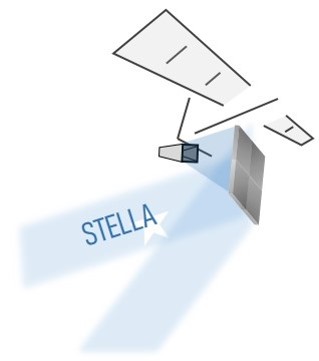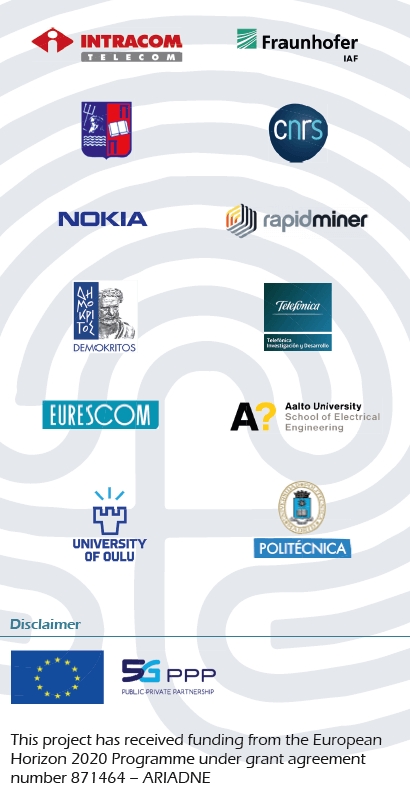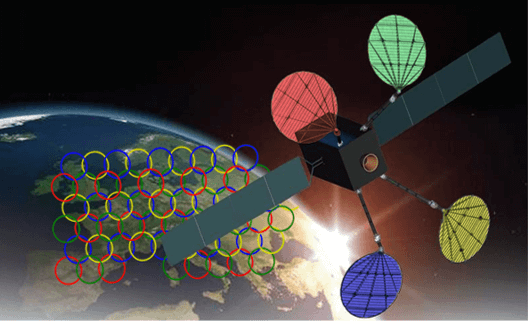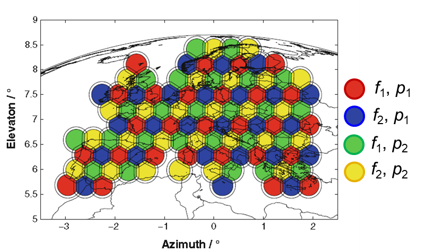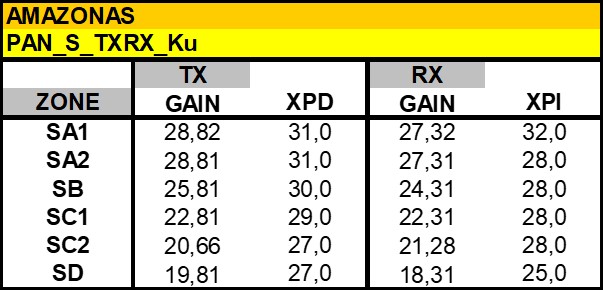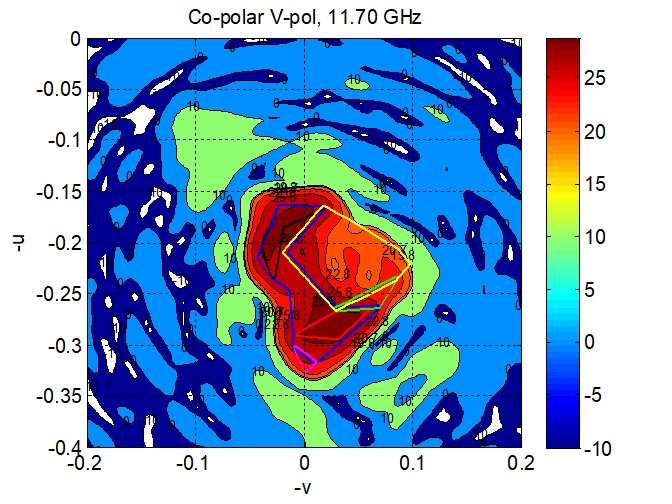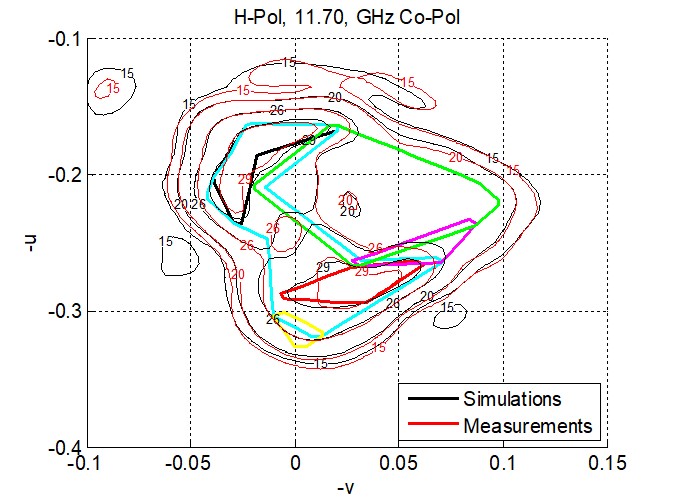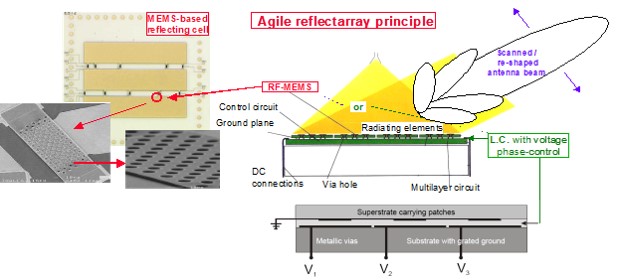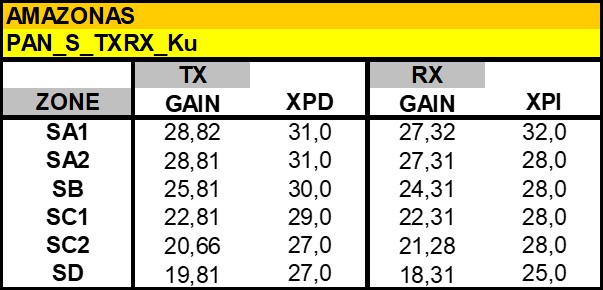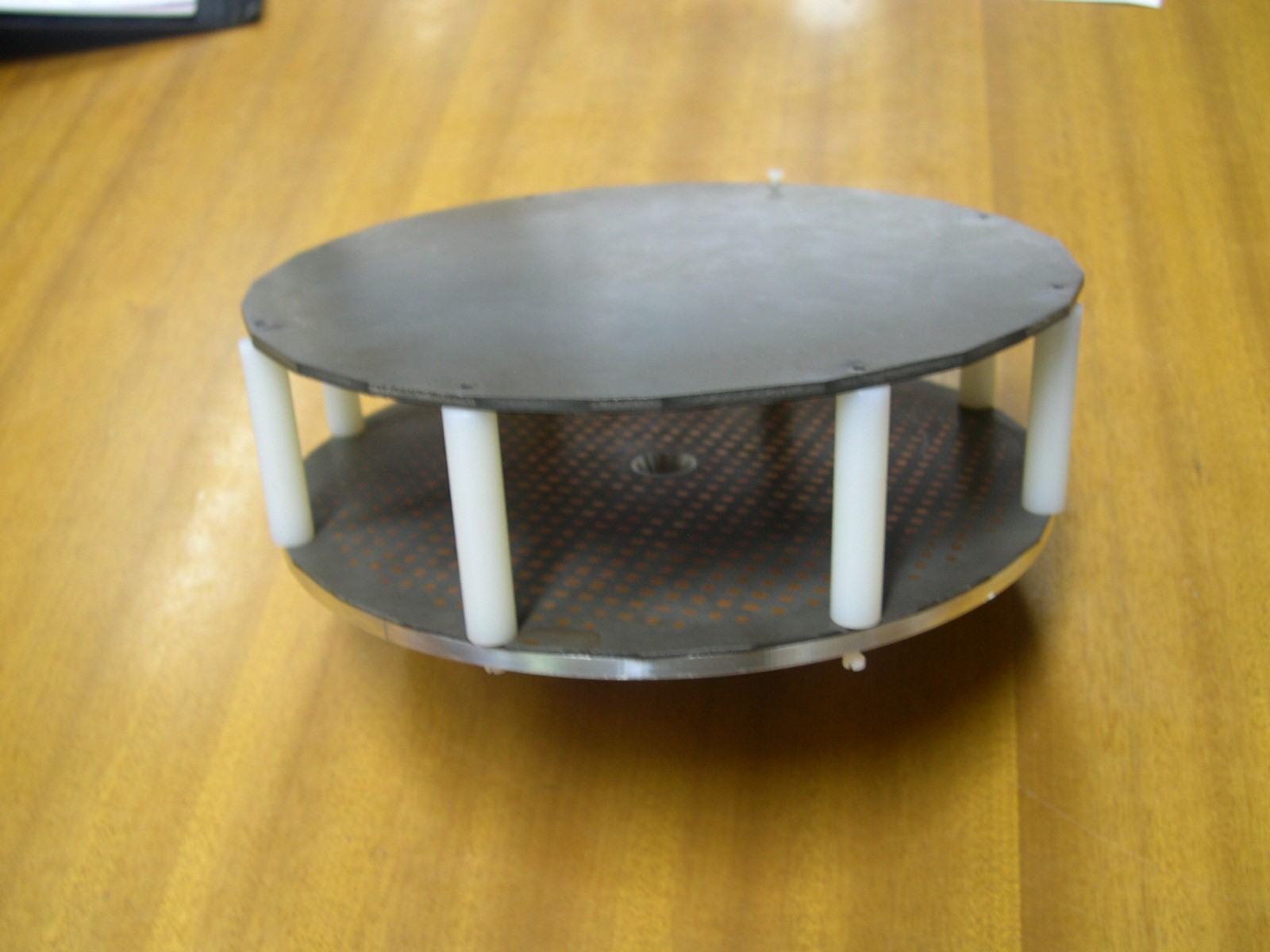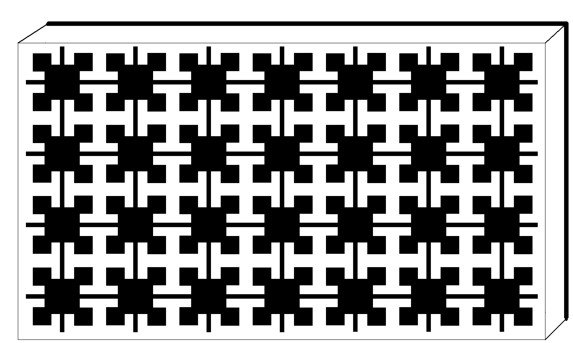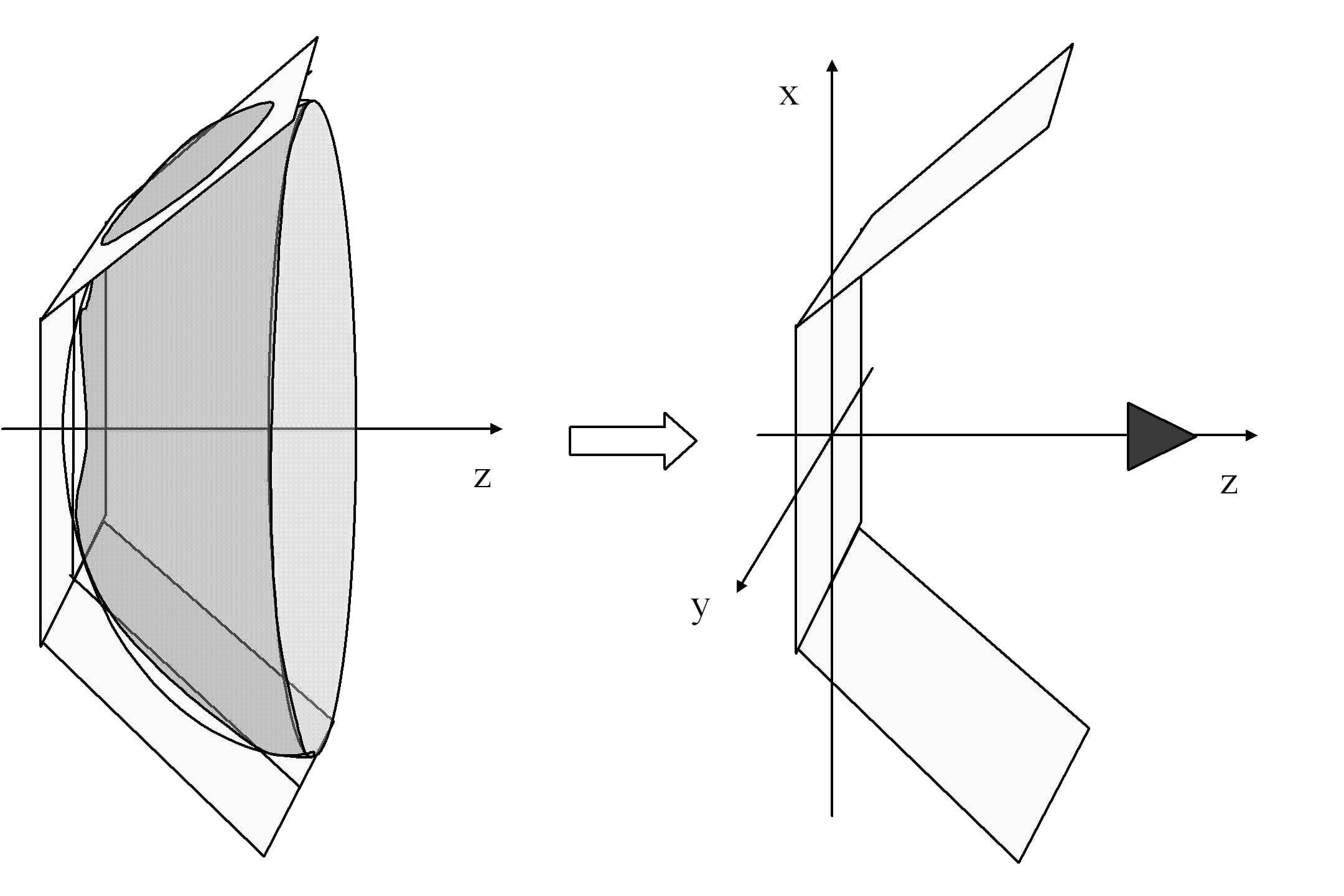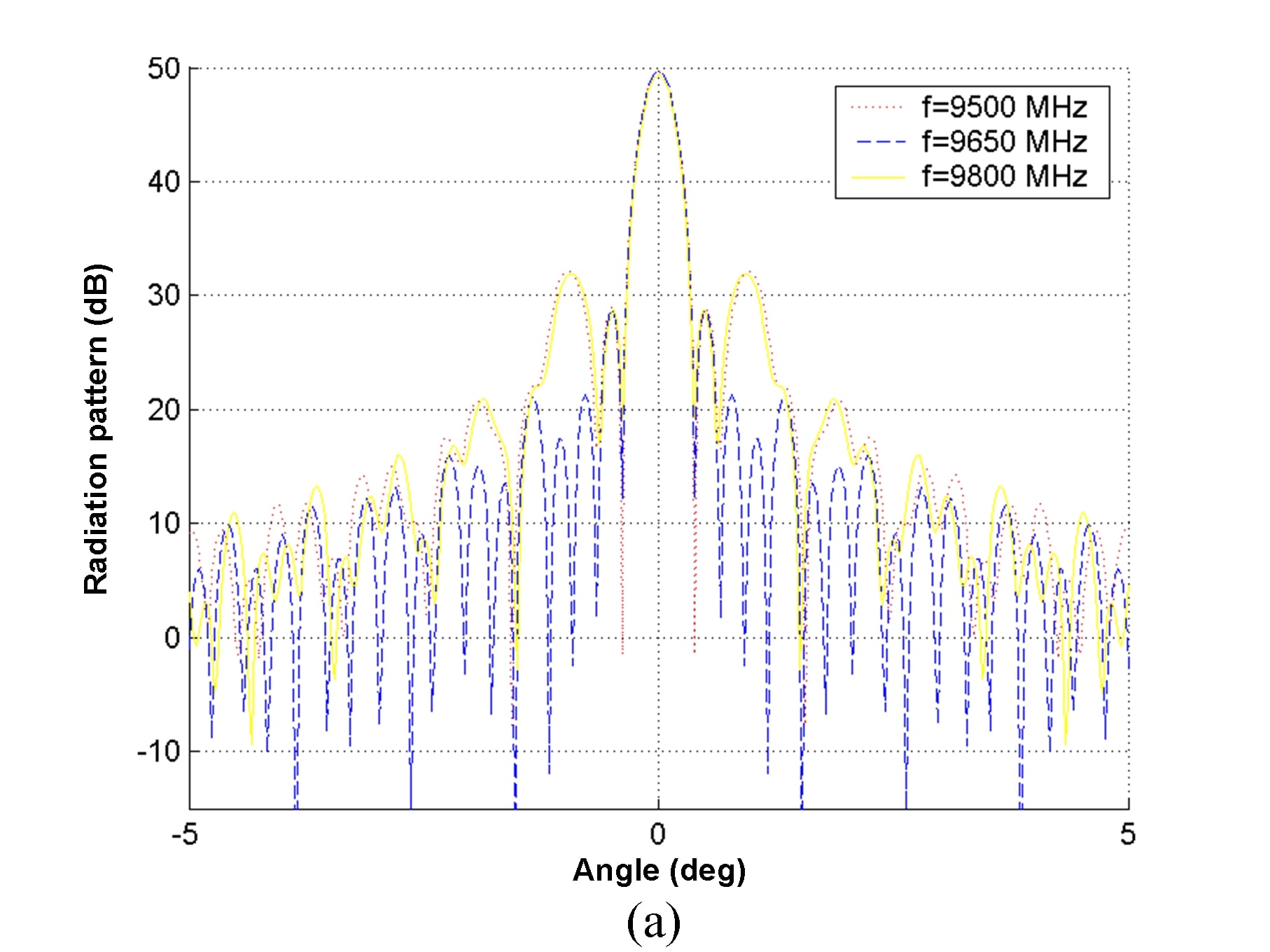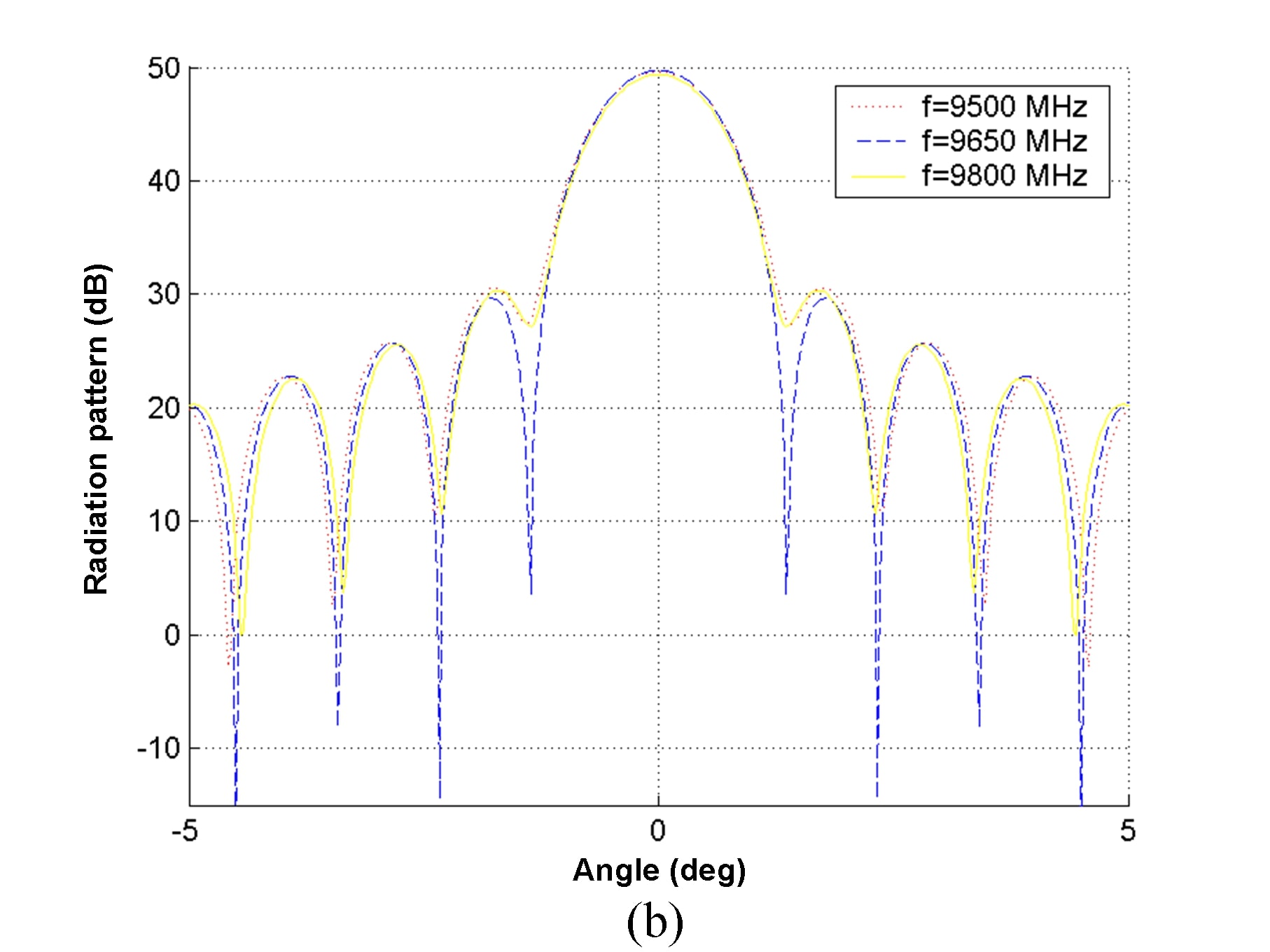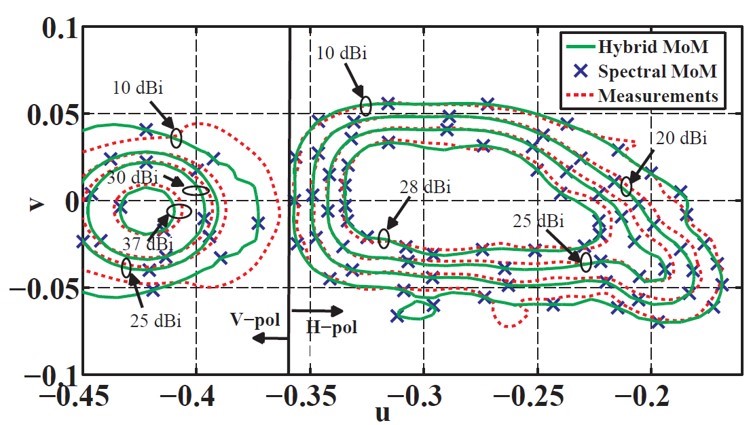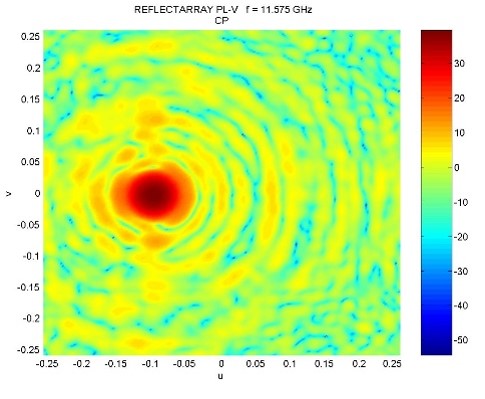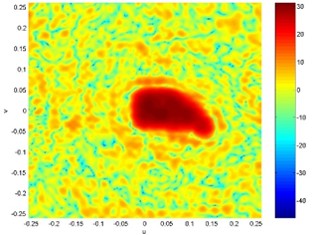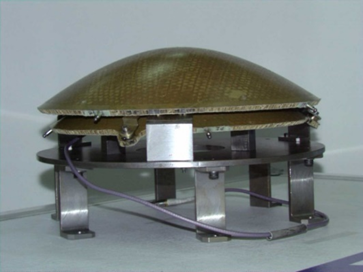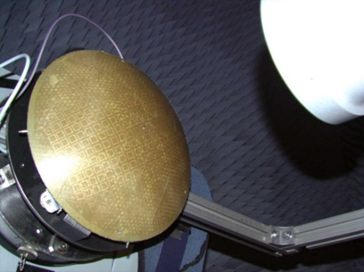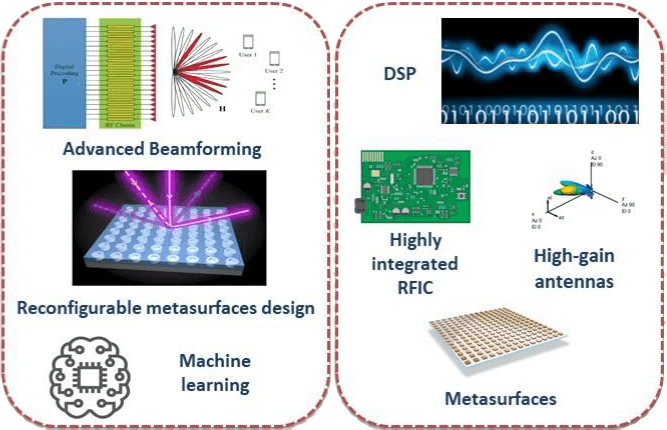
ARIADNE:
“Artificial Intelligence Aided D-band Network for 5G Long Term Evolution” (H2020 5G PPP)
2019-2022
Different technologies are developed and integrated (A. I., Maching Learning, Radiofrequency over 100 GHz) for wideband wireless communication systems, beyond 5G.

MARTA
“Multiple Beam Antennas based on Reflectarrays and Transmitarrays” ESA-AO8438
2016-2019
The goal of this ESA project was to reduce the number of antennas on satellites that provide broadband Internet access, using four-color multi-spot coverage (two frequencies and two polarizations). Nowadays, these satellites use 4 reflector antennas, one antenna for each color.
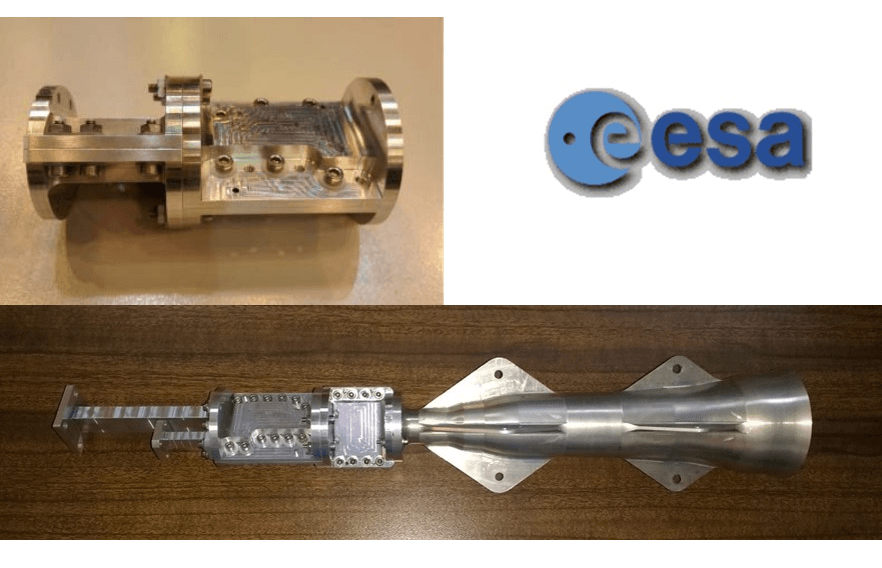
ESA Innovation Triangle Initiative (ITI) Compact K/Ka band antenna feed for multi‐beam satellite communications
2015-2017
Development of antenna feeders for communications satellites with multihaz technology in dual-band K/Ka.
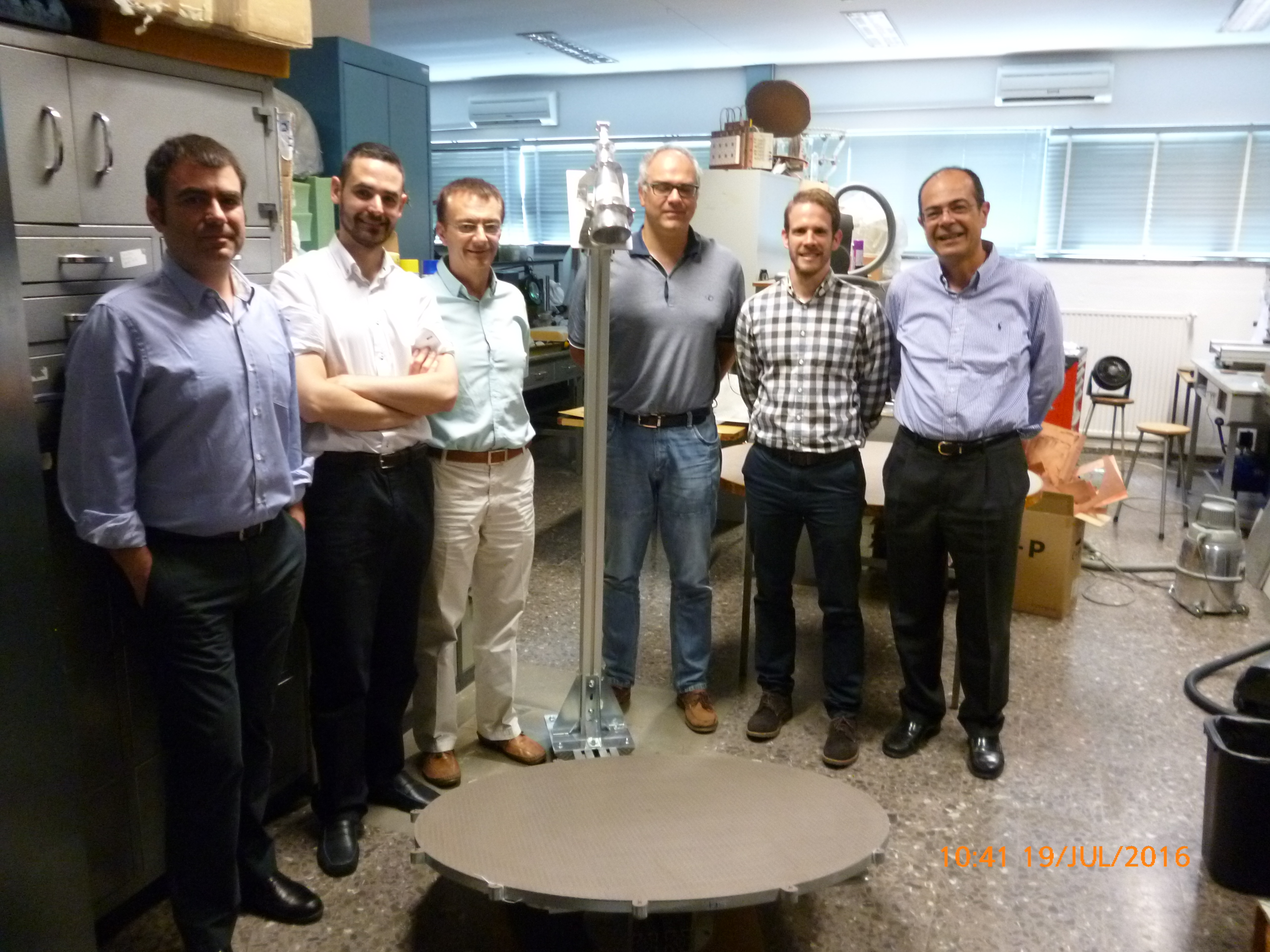
RAIPAD
Reflectarray Antennas with Improved Performances and Design Techniques (ESA-ESTEC)
2012-2016
A final antenna breadboard (BB) of 1.1-m diameter has been designed, manufactured and tested to provide the “South Pan–American mission (PAN–S)” on the Amazonas satellite operating in Tx (11.7–12.2 GHz) and Rx (13.75–14.25 GHz).
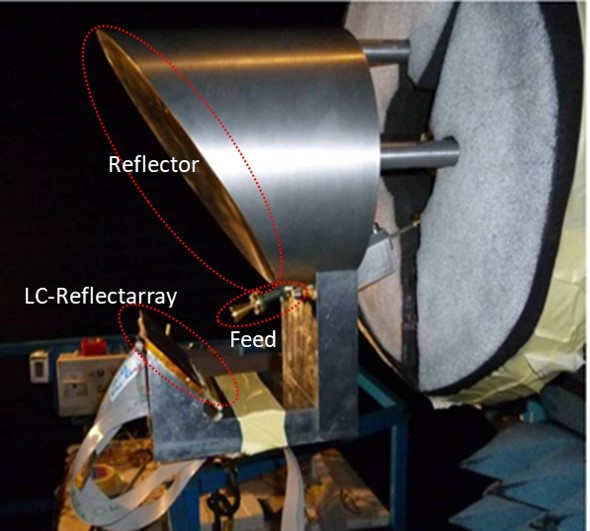
Innovative Reconfigurable Systems Based on Liquid Crystals (ESA-AO6419)
2011-2014
In this project, we have contributed to the development of the LC technology, models and biasing techniques for electronic reconfigurable antennas at frequencies above 100 GHz. We have successfully designed, manufactured and tested a beam-scanning antenna at 100 GHz, made of a parabolic main reflector and a reconfigurable reflectarray subreflector.
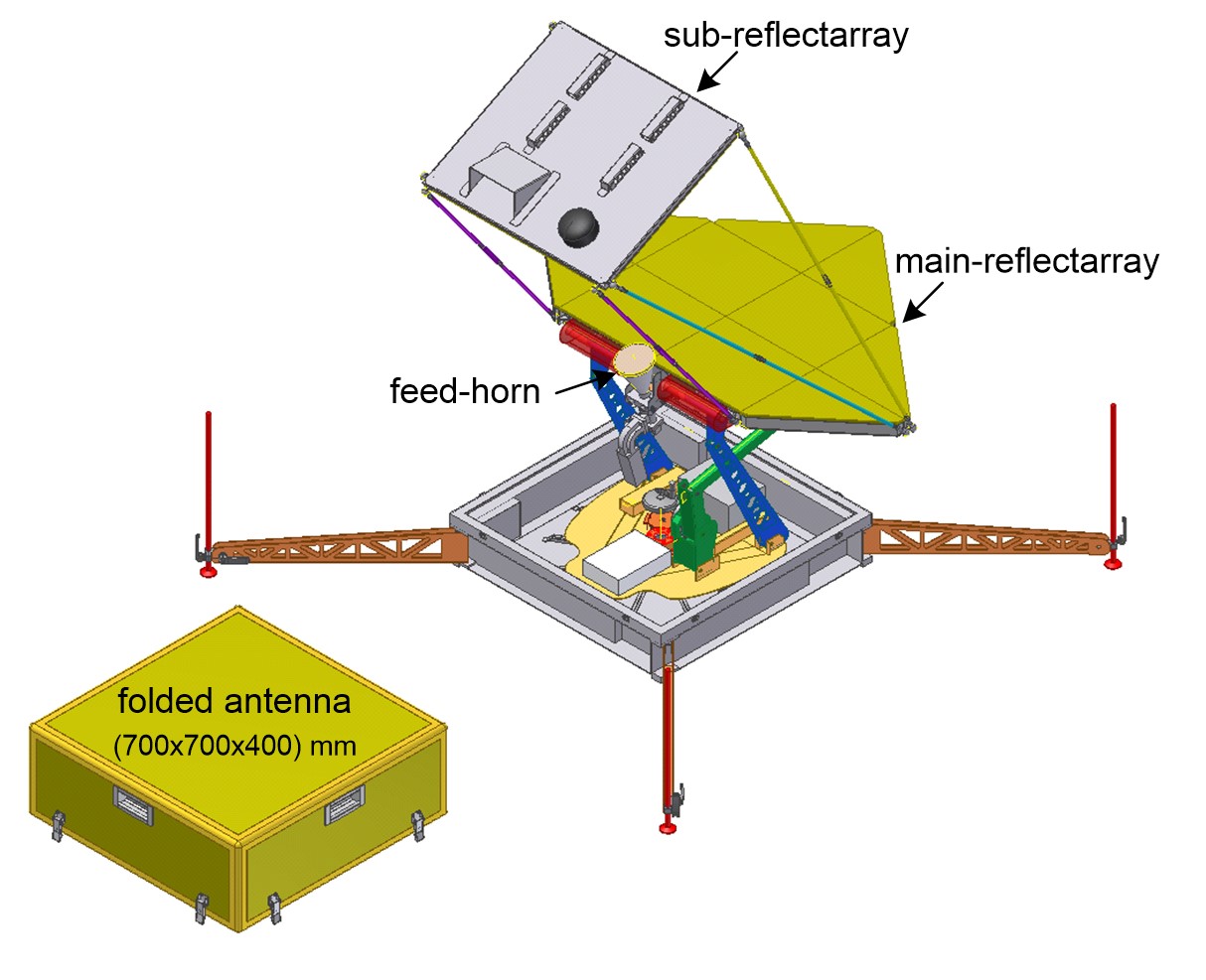
RESKUE
“Transportable REflectarray Antenna for Satellite KU-band Emergency Communications”, ESA ITT AO/1-5609/08/NL/ST
2009-2013
The design, manufacture and test of a Ku band reconfigurable reflectarray antenna for emergency satellite communications was satisfactorily accomplished.
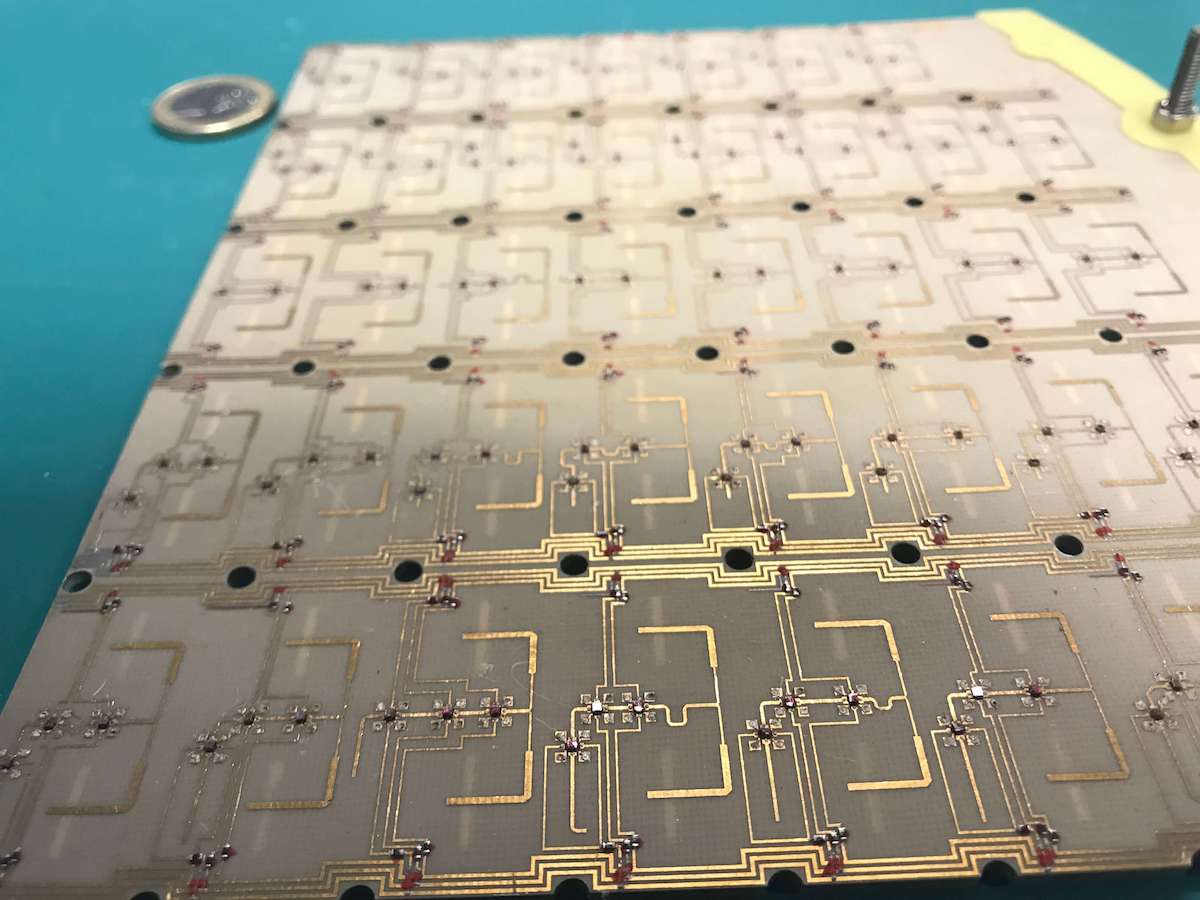
MEMS & Liquid Crystals based Agile Reflectarry Antenas for Security & COMunications European Comission FP7-ICT
2008-2011
This project was focused on R&D for efficient use of micro-nano devices as basis of agile antennas with moderate cost, that are more and more required in advanced systems for Communication, Safety and Security.
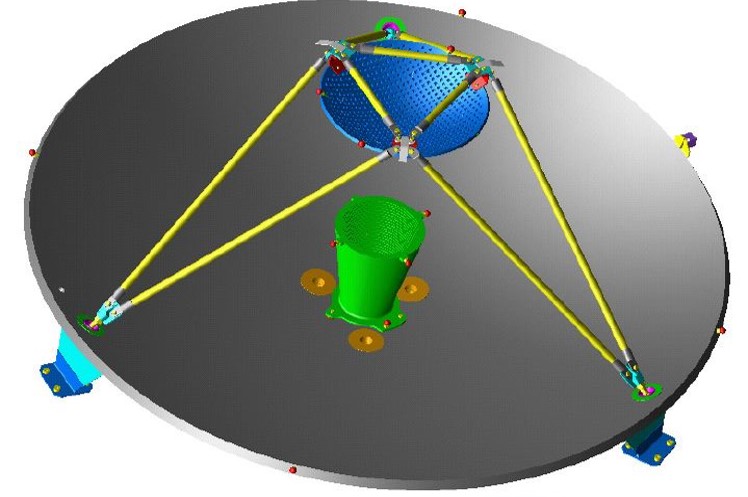
X/Ka-band High Gain Data Transmission Antennas, ESA-CASA Espacio (Airbus), RYMSA, UPM
2007-2012
A high gain antenna has been demonstrated with a reflectarray printed on a curved subreflector and a main reflector to improve the antenna gain simultaneously in X- and Ka-bands.
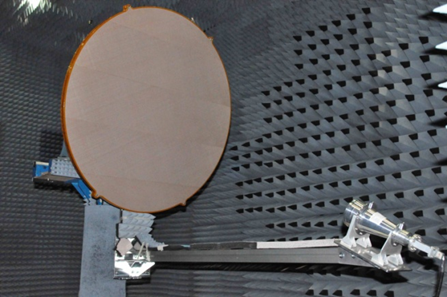
DEMORATA
Demonstration Model of a Reflectarray for Telecommunications Antenna
2006-2010
A 1.2–meter reflectarray demonstrator was designed, manufactured and tested to provide South America coverage from the Amazonas satellite, operating in the frequency bands: Tx (11.7–12.2 GHz) and Rx (13.75–14.25 GHz).
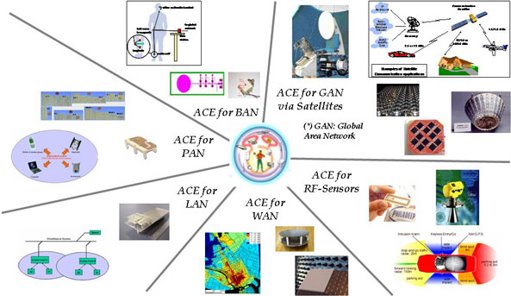
ACE: Antenna Centre of Excellence, Network of Excellence
2004-2007
The ACE Network was a Network of excellence in the European 6th framework IST. Its objective was to structure the fragmented European antenna R&D and boost excellence and competitiveness in some specific selected areas.
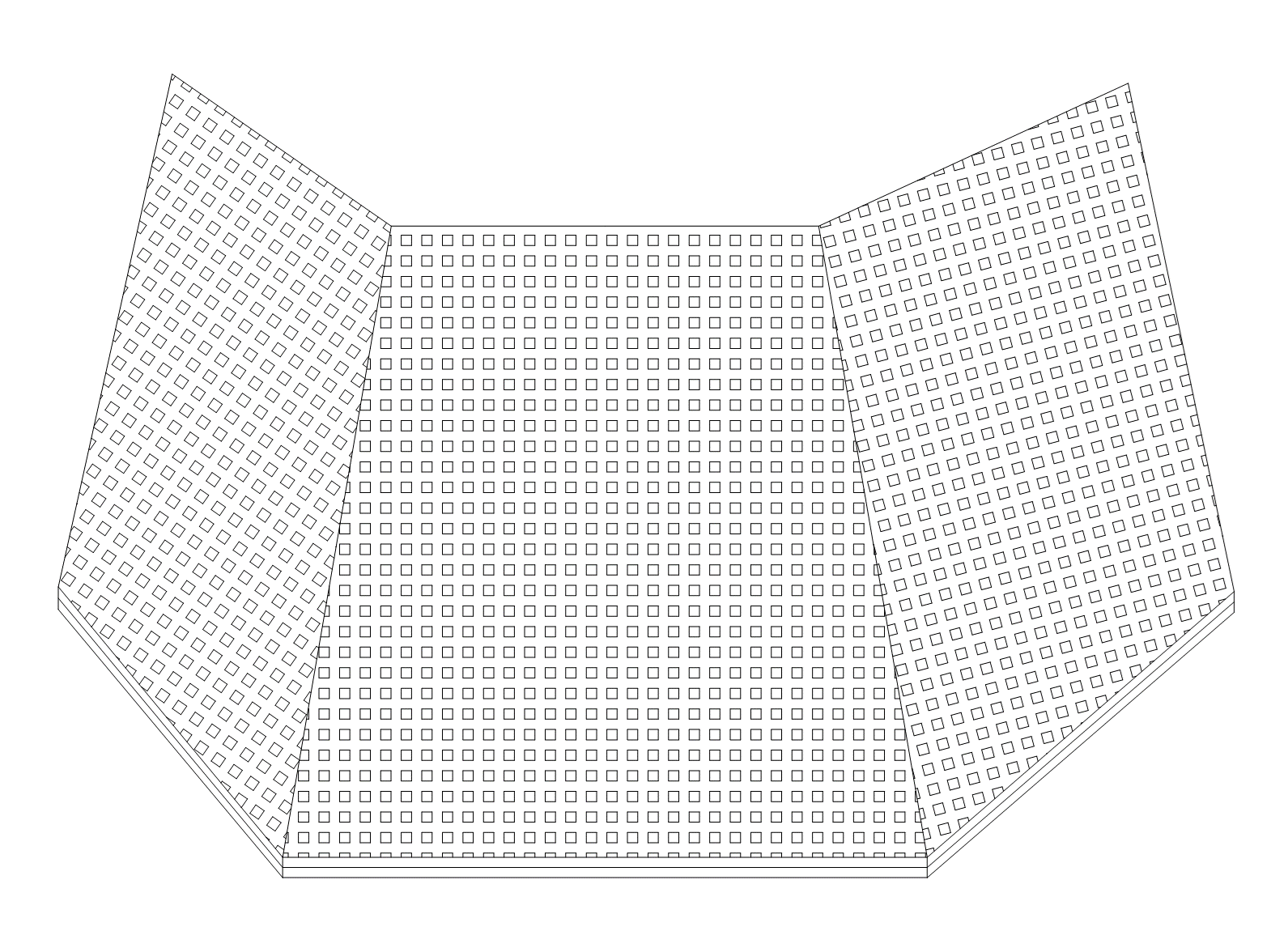
System application and realization of novel deployable antenna concepts for future development and tests (ESA)
2004-2006
Different technologies were studied for space-deployable antennas up to 20 meters, including antennas formed by deployable reflectarray panels and periodic-structure lenses.
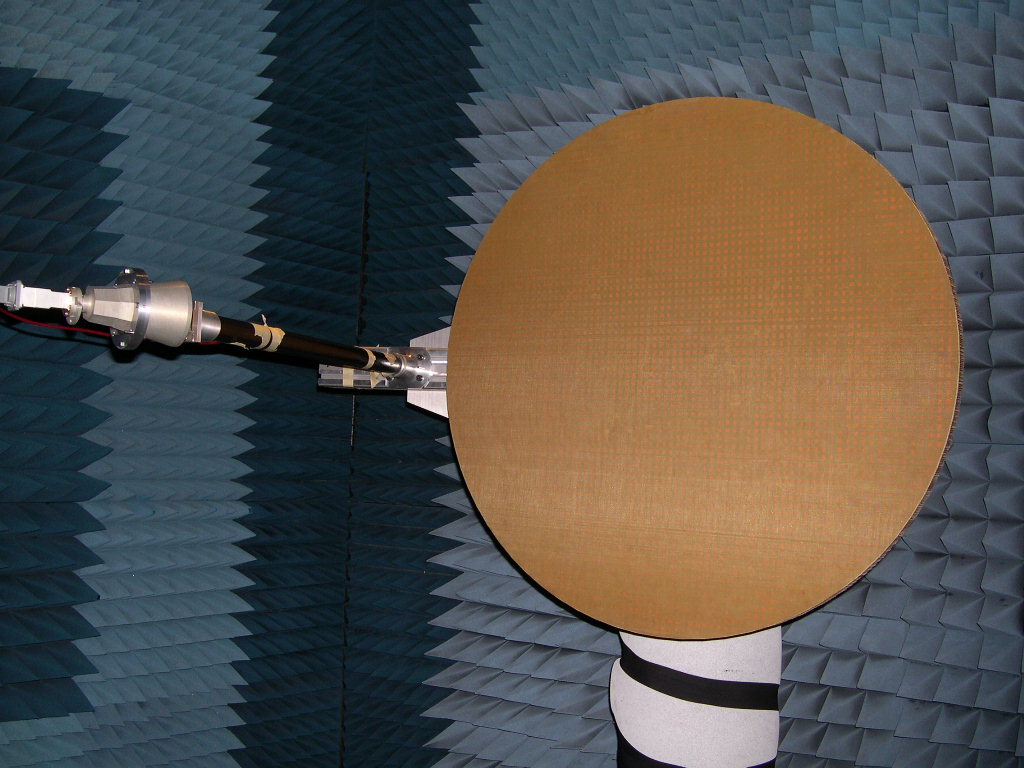
RAFP: Reflect-array Antennas in Flat Panels, ESA TRP AO/1-4133/02/NL/JA
2003-2005
A breadboard of 3-layer printed reflectarray for dual polarisation with different coverage in each polarisation was designed, manufactured and tested for first time: a contoured beam for an European coverage in H-polarisation (11.45-12.75 GHz) and a pencil beam to illuminate the East Coast in North America in V-polarisation (11.45-11.7GHz).

Design of dichroic subreflector for Mars Express (Airbus – ESA)
1999-2001
We carried out the electrical design of the S/X-band dichroic subreflector for the High Gain Antenna (HGA) of “Mars Express mission”.
STELLA
STeerable BEam Reflectarray Antenna in Q, V/W bands for Gateway Links from LEO Satellites
In Evaluation
The goal is to demonstrate electronically reconfigurable beam antenna technology in Q V/W bands, based on liquid crystal reflectarrays (LC-RA), for broadband communications using low-orbit satellite constellations.
ARIADNE: “Artificial Intelligence Aided D-band Network for 5G Long Term Evolution” (H2020 5G PPP)
Project website: https://www.ict-ariadne.eu/
The group participates in ARIADNE project, supported by the European Comission through the H2020 Framework Programme. This kind of projects promotes the industrial leadership, as well as reinforces the scientific excelence in Europe. The Project involves the participation of 12 partners from 5 european countries, highlighting the leadership of Telefónica I+D, Nokia, and several SMEs; also scientific institutions with wide prestige, including the Fraunhofer Institute from Germay, the French National Centre for Scientific Research (CNRS), Demokritos National Centre for Scientific Research from Greece, Piraeus, Aalto, Oulu universities, and UPM.
The ARIADNE project plans to bring together a novel high frequency advanced radio architecture and an Artificial Intelligence (AI) network processing and management approach into a new type of intelligent communications system Beyond 5G. The new intelligent system approach is necessary because the scale and complexity of the new radio attributes in the new frequency ranges cannot be optimally operated using traditional network management approaches.
GEA is developing a steered-beam reflectarray antenna based in liquid crystal technology, which electronically adapts the coverage zones into buildings, above 100 GHz. This is a 3-year Project which started in November 2019.
MARTA: “Multiple Beam Antennas based on Reflectarrays and Transmitarrays” ESA-AO8438
The goal of this ESA project was to reduce the number of antennas on satellites that provide broadband Internet access, using four-color multi-spot coverage (two frequencies and two polarizations). Nowadays, these satellites use 4 reflector antennas, one antenna for each color.
Different antenna configurations using reflectarrays have been studied, including single (one reflectarray) and dual (two reflectarrays) arrangemenets. At the end of the project, we have demonstrated that a multi-spot coverage can be generated with only two reflectarray antennas, instead of four conventional reflectors
We have designed, manufactured and measured a 90-cm demonstrator, which is a scaled model (1:2) of the real antenna. The antenna demonstrator is a parabolic reflectarray that generates two adjacent beams in orthogonal circular polarization per feed (see figure). This is possible, because a reflectarray can generate a different beam for each polarization. As a result, the number of antennas and feeds are reduced to one half, with a significant saving of weight and volume in satellite payload.
ESA Innovation Triangle Initiative (ITI) Compact K/Ka band antenna feed for multi‐beam satellite communications
Development of antenna feeders for communications satellites with multihaz technology in dual-band K/Ka.
RAIPAD: Reflectarray Antennas with Improved Performances and Design Techniques
GEA-UPM was the Prime Contractor of a team involving Univ. of Seville and Univ of Oviedo for this TRP activity. In this project the team has proposed and validated a new reflectarray cell with improved performance (bandwidth, low cross-polarization and low losses) and simplified manufacturing process (only 2 array layers and 2 dielectric layers), which has been protected by an ESA patent. A software tool to completely design Tx and Rx reflectarray antennas in Ku-band to produce contoured beams with improved performances has been developed and delivered to ESA. The design tool optimizes all the lengths of the printed dipoles to improve the antenna performances, and it has been validated by several demonstrators. First, a 40-cm validation demonstrator has been manufactured and tested, showing an excellent agreement between measured and simulated radiation patterns.
A final antenna breadboard (BB) of 1.1-m diameter has been designed, manufactured and tested to provide the “South Pan–American mission (PAN–S)” on the Amazonas satellite operating in Tx (11.7–12.2 GHz) and Rx (13.75–14.25 GHz).

The measured radiation patterns of this antenna in Tx and Rx frequencies show improvements when compared with two reference antennas: 1) 1.2-m reflectarray made of 3 layers of stacked patches (DEMORATA) and 2) 1.1-m conventional reflector.
The RAIPAD demonstrator has fully demonstrated the viability of this technology with very promising capabilities for Ku-Band TX/RX antennas in broadcasting satellites
Innovative Reconfigurable Systems Based on Liquid Crystals. ESA-ESTEC/Contract 4000103061
UPM has participated in this ESA project (2011-2014) as subcontractor with NPL (UK) and QUB (UK) to develop a LC-based reflectarray antenna in dual-reflector configuration to provide an electronically steerable beam in a range from -8º to +6º. In this project, we have contributed to the development of the LC technology, models and biasing techniques for electronic reconfigurable antennas at frequencies above 100 GHz. We have successfully designed, manufactured and tested a beam-scanning antenna at 100 GHz, made of a parabolic main reflector and a reconfigurable reflectarray subreflector. The dual-reflector antenna and the measured scanned patterns are shown in the figure.
RESKUE: “Transportable REflectarray Antenna for Satellite KU-band Emergency Communications” (ESA 2009-2013)
GEA-UPM has participated as subcontractor in this ESA ARTES-5 activity (2009-2012) in a consortium led by R. Vincenti from RF-Microtech (Italy), including the companies Elital (Italy) and Triagnosys (Italy).
The design, manufacture and test of a Ku band reconfigurable reflectarray antenna for emergency satellite communications was satisfactorily accomplished. To operate in this type of scenario, the antenna is deployable, transportable and easily repointable. The antenna operates in 10.7-12.5 GHz for reception and in 14-14.5 GHz for transmission. The antenna is a dual reflectarray system comprising a passive sub-reflectarray (designed by GEA-UPM) and an active main reflectarray made of reconfigurable 1-bit elementary cells based on PIN-diodes. The results of this project validate the techniques used for the analysis and design of dual-reflectarray antennas and demonstrates electronic beam scanning.
ARASCOM: MEMS & Liquid Crystals based Agile Reflectarray Antenas for Security & Comunications
European Commission FP7-ICT
This project was focused on R&D for efficient use of micro-nano devices as basis of agile antennas with moderate cost, that are more and more required in advanced systems for Communication, Safety and Security. We have designed, manufactured and tested representative innovative prototypes of agile “reflectarray” antennas for Communication (to be implemented in base-stations and satellites), using two different technologies: RF-MEMS switches and reconfigurable reflectarray cells based on Liquid Crystals (LC-RA), both integrated in the radiating board of the antenna. The results of this project include several paper at IEEE Trans. on Antennas & Propagation and Conference papers.
The consortium was made of 9 complementary partners from 4 large member-states: 1) among the best European academies for MEMS & LC design (U. Perugia, T.U.Darmstadt), as for reflectarray antennas (U.P.Madrid & Perugia); 2) public Research institutes, leaders for RF-MEMS development over a large range of frequencies (LETI, FBK); and 3) industrial end-users among the main players in Communication, Security & Safety: SELEX-SI for concealed weapon detection, EADS-Innovation Works for helicopters landing radar, Thales Alenia Space for satellites and S.R.F.Moyano for base-stations.
X/Ka-band High Gain Data Transmission Antennas, ESA-CASA Espacio (Airbus), RYMSA, UPM
The group GEA from UPM has participated in this project (2007-2012), as subcontractor of EADS-CASA ESPACIO (now Airbus). In this project, an X-Ka band high gain antenna configuration has been proposed using a reflectarray printed on a curved subreflector (designed by GEA-UPM) and a main reflector, see figure, to improve the antenna gain simultaneously in X- and Ka-bands. The experiences of partners were combined, like reflectarray developments (GEA-UPM), feed design and technology (Rymsa) and design and technological manufacturing processes (EADS CASA Espacio). The specific design of the reflectarray made it possible to make efficient use of the antenna aperture for two different bands for high-gain, whilst controlling separate bands. The reflectarray was made of two layers with patches printed on Kapton and bonded to Quartz prepreg laminates on the subreflector surface optimized to maximize the antenna gain at X-band. The results of the radiation patterns were satisfactory on both frequency bands. The results validated the analysis and design tools and the manufacturing techniques using space-qualified materials for the curved reflectarray subreflector.
DEMORATA: Demonstration Model of a Reflectarray for Telecommunications Antenna
GEA-UPM was the Prime Contractor of a team involving EADS-Astrium CASA (Now Airbus), for the ESA project (ARTES-5), DEMORATA, in which a 1.2–meter reflectarray demonstrator was designed, manufactured and tested. The requirements of a real DBS spacecraft antenna providing service to South America, the “South Pan–American mission (PAN–S)” on the Amazonas satellite (located at a longitude of 61ºW in the geostationary orbit) were selected to design the Tx–Rx reflectarray antenna, Tx (11.7–12.2 GHz) and Rx (13.75–14.25 GHz).
The demonstrator was made using 3 layers of rectangular patch arrays in a honeycomb sandwich using space-qualified materials (AstroQuartz).
The requirements of minimum gain were practically fulfilled at both frequency bands, with measured losses of 0.3dB. The results of this project include: 1 paper at IEEE Trans. on Antennas and Propagation, several Conference papers and 1 ESA patent.
ACE: Antenna Centre of Excellence (Network of Excellence) European Commission FP6, FIST-2004-508009 & IST-2006-026957
ACE has been a successful Network of excellence in the European 6th framework IST, which contributed to promote collaboration among the main actors of antenna research in Europe. Both, academy and Industry have worked together in some selected R&D activities.
The GEA has participated in the two phases of ACE (2004-2007) in several activities, such as “Numerical techniques for analysis of antennas and arrays”, such as Finite Element Method (FEM) and Method of Moments (MoM) and “Array and reflectarray antennas”. The GEA was coordinating the activity WP2.4.2: Reflectarrays technology and design. In this activity, we evaluated all the R&D activities in the analysis, design and potential applications of reflectarray antennas, in close collaboration with Universities, Research Centers and European Industry.
The antenna demonstrator produced in the ESA Project RAFP was used as bench mark for the full-wave computational techniques developed by different institutions, such as University of Florence, University of Alcala de Henares and Univ. Politecnica de Cataluña.
System application and realization of novel deployable antenna concepts for future development and tests (ESA 2004-2006)
GEA has participated as subcontractor in this TRP activity (2004-2006) in a consortium led by H. Legay (Alcatel Space, Toulouse), which also included: LLB (Institute of Lightweight Structures, in German: Lehrstuhl für Leichtbau) of TU München (Germany), DSL (Deployable Structures Laboratories) of University of Cambridge and SFL (Space Flight Laboratory) of University of Toronto (Canada).
The trends of this project were: to extend the size of deployable antennas (going up to more than 20 meters in L band), and to improve the surface accuracy and reflectivity so that the large reflector antenna could be used at higher frequencies.
The following technologies were studied: 1) inflatable and deployable reflectors, 2) film lens antennas and 3) flat reflectarray antennas. GEA-UPM carried out preliminary studies of film lens antennas (low profile transmitarrays), flat and multi-panel reflectarrays.
The main result of this project from the UPM team was the design of a 3-panel reflectarray for X-band SAR antennas applications (9.65 GHz with 300 MHz bandwidth). The aperture was defined as 6m x 1.6m and the focal length as 2000 mm, see figure. The effect of differential spatial phase delay in each panel was compensated by using three layers of array patches and optimizing the patch dimensions to match the required phase–shift for both linear polarizations in the required frequency band (9.5–9.8 GHz). The resulting radiation patterns in azimuth plane (corresponding to the large antenna dimension) obtained by the analysis routine based on SD–MoM and local periodicity are very similar at central and extreme frequencies, as shown in the figure. These results show that the multi–facet configuration in conjunction with the techniques for bandwidth improvement is a suitable solution for large aperture antennas in space applications.
RAFP: Reflect-array Antennas in Flat Panels, ESA TRP AO/1-4133/02/NL/JA

GEA-UPM has been the Prime Contractor of this ESA TRP activity involving the following institutions: Lehrstuhl für Leichtbau (LLB), TU München (Germany), KRP-Mechatec Engineering (KRP-M), München (Germany) and ALCATEL SPACE, Toulouse (France).
In this project, a breadboard of a three-layer printed reflectarray for dual polarisation with a different coverage in each polarisation was designed, manufactured and tested for first time, see figure. The reflectarray antenna provided 10% bandwidth and was designed for the requirements of a dual gridded reflector in a Telecom mission, which are: a contoured beam for an European coverage in H-polarisation (11.45-12.75 GHz) and a pencil beam to illuminate the East Coast of North America in V-polarisation (11.45-11.7GHz).
The novelty of this work was the demonstration that two independent beams, one for each polarisation, were generated with a single flat reflectarray surface, and consequently, a significant reduction in mass and volume can be achieved in the payload of the satellite.
The results of this project were published in the paper “Dual-Polarization Dual-Coverage Reflectarray for Space Applications”, which received the “2007 S. A. Schelkunoff Transactions Prize Paper Award” by the IEEE Antennas and Propagation Society.
Design of dichroic subreflector for Mars Express (Airbus ESA, 1999-2001)
GEA-UPM, as subcontractor of EADS-CASA ESPACIO (now Airbus), has applied the modular analysis tool previously developed for periodic structures to the electrical design of the S/X-band dichroic subreflector for the High Gain Antenna (HGA) of “Mars Express mission”. We proposed in this project an innovative configuration for the subreflector, based on two Frequency Selective Surfaces (FSS) on separated sandwiches, which provided low mass and very low insertion losses in S-band. The same design and sandwich configuration was also used in the dichroic subreflector for “Venus Express” mission. The design was only updated to account for different materials. Both missions have been in operation with satisfactory results.
In this project, we validated the technology for designing and manufacturing printed arrays on curved surfaces, using space qualified materials


